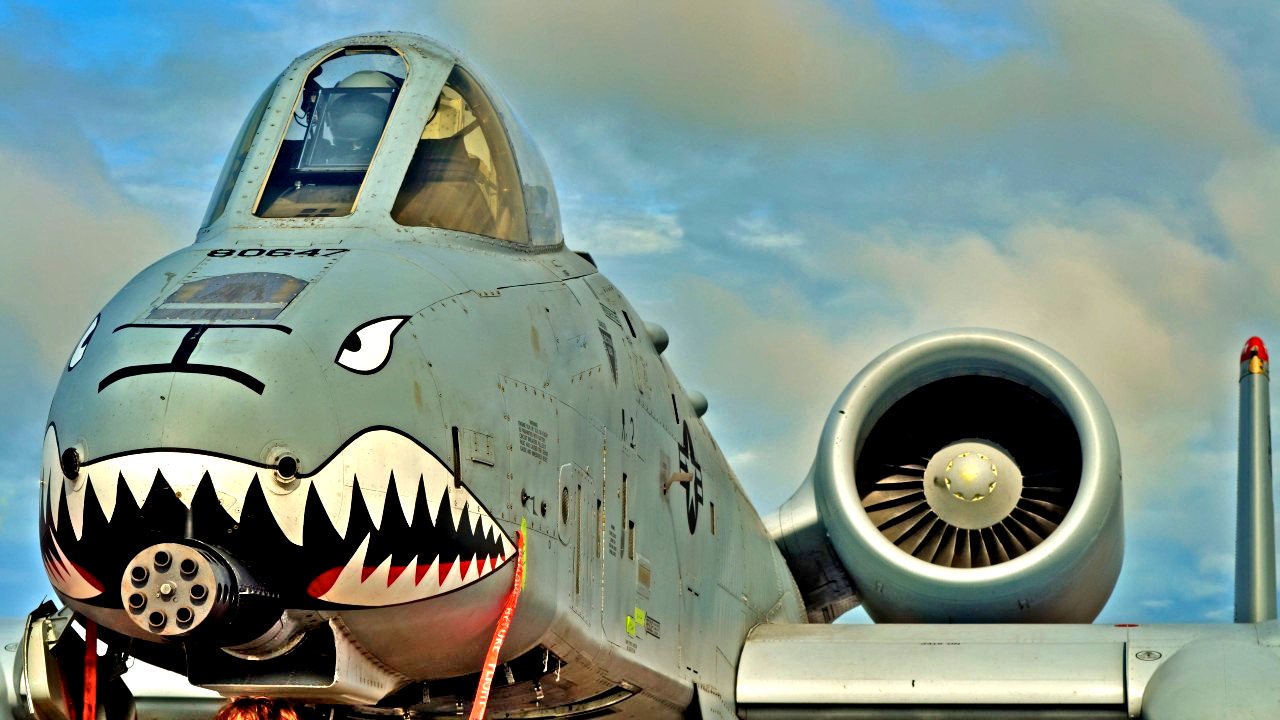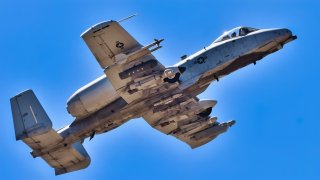Why the A-10 Warthog Must Be Retired
Despite debates over its retirement due to its cost-effectiveness and exceptional performance in ground support missions, the A-10's design, centered around the formidable GAU-8/A Avenger Gatling gun, is increasingly seen as incompatible with the demands of future conflicts, particularly against technologically advanced foes like China.
Summary: Despite debates over its retirement due to its cost-effectiveness and exceptional performance in ground support missions, the A-10's design, centered around the formidable GAU-8/A Avenger Gatling gun, is increasingly seen as incompatible with the demands of future conflicts, particularly against technologically advanced foes like China.
End of an Era: The A-10 Warthog Begins Its Final Descent
The long debated, long resisted A-10 Warthog retirement is officially underway.
Last month, the first crop of A-10s from Davis-Monthan Air Force Base’s 355th Wing were transferred to “The Boneyard,” where they will rest in perpetuity.
February’s retirements are just the beginning. The 355th Wing intends to retire its entire A-10 squadron before the end of the calendar year. The U.S. Air Force wants to replace the Warthogs with more advanced fighter jets before 2030.
The Davis-Monthan fleet of A-10s counts 76 airframes in three distinct squadrons – all of which will be disbanded. A-10 pilots will be transferred to different units with different airframes.
“The A-10 has been the symbol of Davis-Monthan Air Force Base for many years,” said 355th Wing Commander Col. Scott Mills. “And it will continue to be a symbol for the airmen, a symbol of their commitment, excellence, and service.”
The February retirement comes after twenty-one A-10 aircraft were retired in Fiscal Year 2023 from the 122nd Fighter Wing at Fort Wayne Air National Guard Base in Indiana. Those retirements brought the total A-10 inventory from 281 down to 260.
“The service has divested five of the aircraft so far in fiscal 2024,” Air Force Times reported, “and plans to reduce its stock of Warthogs to 218 by the end of the year.”
Thirty-six of the retirees will come from Davis-Monthan. The rest will come from Moody Air Force Base in Georgia. Clearly, the end of the A-10’s service life is nigh.
A-10: A Celebrated Airframe
Debate over retiring the A-10 raged through successive presidential administrations. The attack jet, first flown in the 1970s, was objectively outdated, but it still performed its core function – close air support – so effectively, and so cheaply, that advocates were able to postpone the A-10’s retirement for a number of years.
As the U.S. pivots its attention toward rival nations with modern radar systems, the non-stealth A-10 starts to seem out of place in the contemporary Air Force. Still, the A-10 will be remembered as the best close air support jet in the history of aviation.
The A-10 was developed at the peak of the Cold War, when the U.S. was engaged in a passive power competition with a peer state. Congress was willing to bankroll a robust defense budget – one that included airframes narrowly tailored to perform a specific function.
Today, airframes are designed with a cost-conscious public and Congress in mind. They need to perform a variety of functions, essentially to make them cost-effective. Jets like the F-35 and the F/A-18 can do a little bit of everything. They may not be perfectly tailored for any given role, but they can perform sufficiently across a broad spectrum of missions.
During the Cold War, however, designers had the backing to build a jet that did one thing very, very well. The result was an inventory full of dazzling aircraft, each of which performed one mission. It was inefficient and expensive, but many of the jets were outstanding in performing the sole function of their design. The SR-71 was a supersonic marvel capable only of surveillance and reconnaissance. The original F-15, undefeated in aerial combat, was built “without a pound for ground.” The workhorse A-6 was built especially for bad-weather and nighttime bombing. And the A-10 was designed to provide close air support better than any other aircraft, ever.

Built by Fairchild Republic, the A-10 is a modified version of the Douglas A-1 Skyraider. The A-10 was built with two engines placed above the jet’s straight wings. The engine placement was strategic, offering better protection from ground fire, as was the straight-wing design, which offered better control at lower speeds.
Most notably, however, the A-10 was built around a Gatling gun, a GAU-8/A Avenger with seven hydraulically driven rotary barrels. The Avenger can fire 3,900 rounds per minute, or 70 rounds per second. Each of the rounds is roughly the size of a Pepsi can.
Basically, when an A-10 shoots something, that something is destroyed, whether it be a tank, an armored vehicle, or a fortified position.
But the A-10, while brilliantly suited for conflict in the plains of Eastern Europe or the deserts of the Middle East against adversaries with outdated air defense systems, is poorly suited for a modern conflict against China. The A-10 lacks the stealth or speed to survive in contested airspace against an advanced enemy. Accordingly, as the U.S. pivots its attention toward the Indo-Pacific, the A-10 will be retired – despite her venerable performance history.
About the Author: Harrison Kass
Harrison Kass is a defense and national security writer with over 1,000 total pieces on issues involving global affairs. An attorney, pilot, guitarist, and minor pro hockey player, Harrison joined the US Air Force as a Pilot Trainee but was medically discharged. Harrison holds a BA from Lake Forest College, a JD from the University of Oregon, and an MA from New York University. Harrison listens to Dokken.


